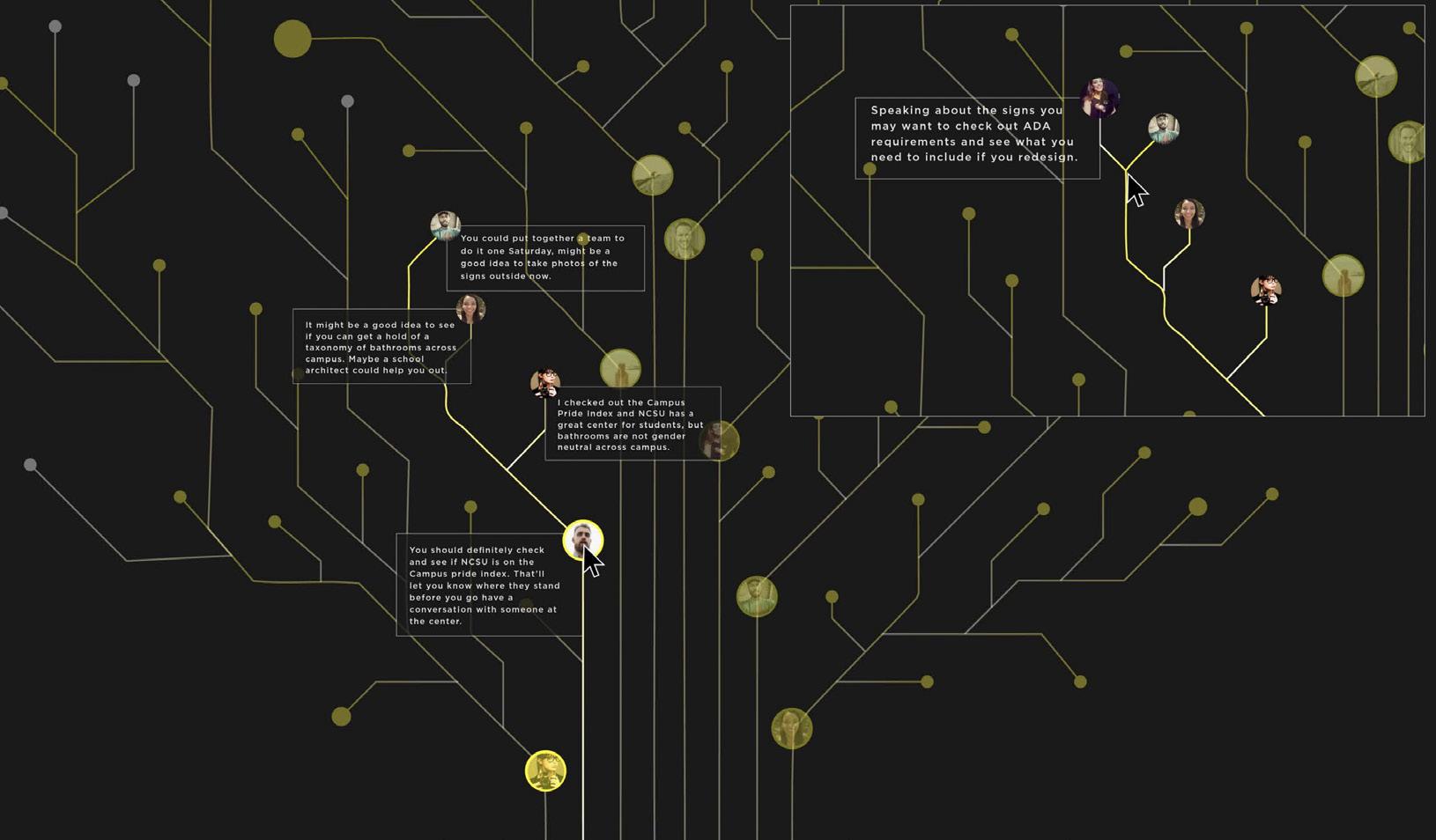
2 minute read
Shadrick Addy
Shadrick Addy (MGXD ‘19) is on faculty at Ohio State University where he is earning his Doctorate. His research explores how extended reality (XR) systems might recreate historical experiences and encourage empathy.


Where are you right now? What are you working on?
I’m in Columbus. I’m a visiting assistant professor at Ohio State University. I teach our courses on immersive technology, virtual and augmented reality, both to undergrad and graduate students. Then I teach a Visual Communication Design course on motion graphics. I’m working on several unclouded collaborative projects, mostly based around how we can use VR and AR for meaningful social impact. I’m very much involved in a community here. Coming from Liberia, West Africa, this is the first time since living in the U.S. that I’ve found a Liberian community, so I’m involved with them to find ways in which we can better come together and support each other.
Does coming from West Africa have an influence on how you thought about graphic design?
Yeah! Initially I didn’t even know there was such thing as graphic design, or even design. When I came to America, I was making music. So I would design my CD covers. I was designing to promote my music. Then I went to community college and interned in the marketing department. That’s where I learned about design. In my undergrad, I was just focusing on learning the tools but I wanted to figure out how to use design to have a meaningful impact on my community. Most of the things I designed hinted towards Africa or the Black experience. Then when I came to NC State, I was proficient with the tools but I didn’t know why I was making certain design decisions. So when I was here, I started to question the role of design in society and how one can you design tools and principles with impact.
At the same time, I went to Africa and I saw conditions on the ground. I had to ask myself, “Can designing logos help me solve these problems in my community like poverty and lack of education?” The answer was no. So I became interested in social design and that’s when I focused on how I can design to have impact in my community.
Why was it important for you to know not just the tools but also the reasons behind your design decisions?
I think the main thing was just curiosity. I wanted to know how and why designed work. But also, I didn’t see a lot of people who looked like me while I was in school. I didn’t see a lot of books informed by African or Eastern thought. I sometimes wonder if subconsciously that was driving me too.
You got into this because you were making music and you were making covers and flyers for your music and now you’re helping nonprofits and working in the community. These are much more complex design issues than your albums covers. How has your understanding of what design is and what it can do changed?
I don’t see myself as just a graphic designer anymore. I like this idea of the Experience Designer. I have a more holistic view of design where I can work with sound or images or words. I can work within different spaces. So just by breaking free of that barrier as a graphic designer has allowed me to expand on what design is and that’s what I can do and contribute. Design is a system where everything works together. I see everything I do as part of this larger system and in the individual components, I help make that system work. And I apply this same thinking to pedagogy, to research, to service, to my personal life.










